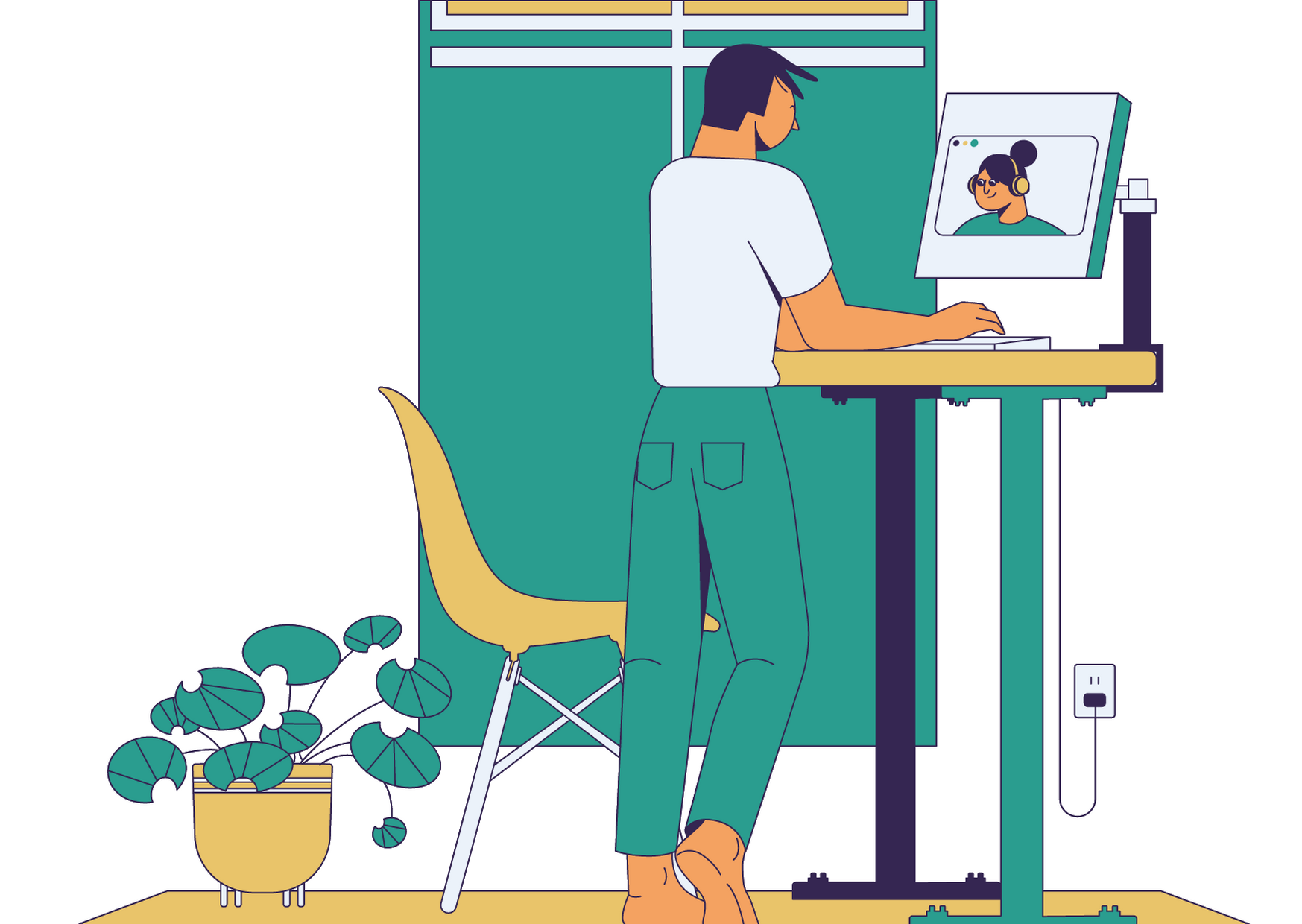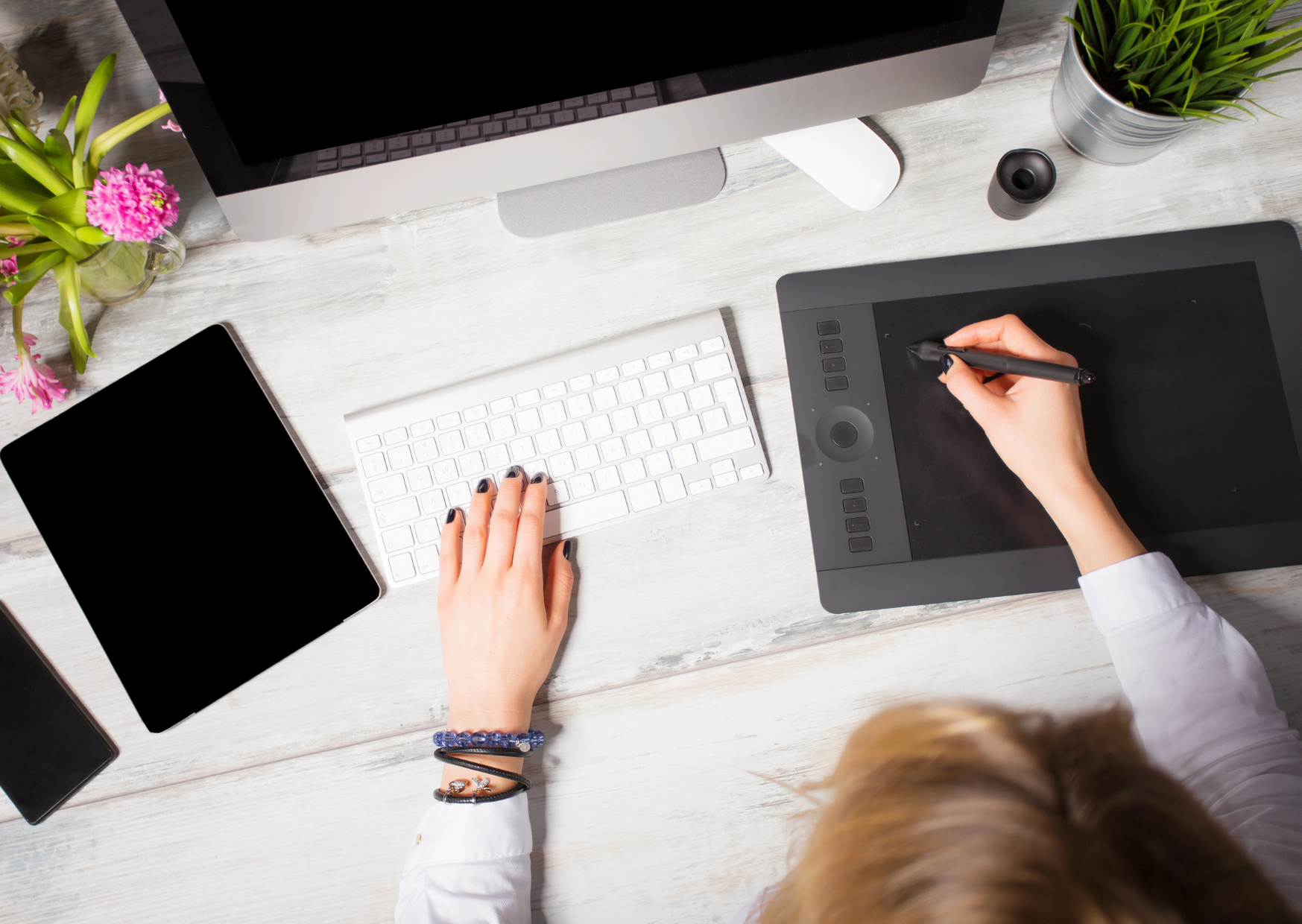
6 Graphic Design Workspace Essentials
Last update: 18 January 2024 at 10:15 am
With the evolution of communication and digitalization, companies have more and more varied needs for their graphic design teams. Not only do their in-house graphic design studio need to be up to date, with more and more graphic designers working from home in their own office, it is difficult to know which gadgets and tools they may need for the perfect ‘home studio’.
In this article, we provide you with the ultimate guide of tools and software you can use to optimise your graphic design workspace and see results. That said, if you need to create visuals, we advise you to work with an agency specialising in graphic design.
Home Graphic Design Studio Set Up
Whether you are just starting out as a graphic designer at home or you have previously worked in an office and are now relocating back home, you’ll first need to create an effective home office environment for your new creative studio which can be difficult.
You won’t have the luxury of any office equipment being provided for you (in some cases you may be able to ask to bring home a few essential items such as a computer, chair, or even desk) so you will need to start from scratch.
To make sure you have a comfortable workspace, find a room in your home that has lots of natural light. Graphic designers spend many hours staring at their laptop and you’ll end up causing lots of strain on your eyes if the only source of brightness you are exposed to is your computer light.
Find a nice desk (we suggest a standing desk to have things at eye level!) with lots of room for you to lay out your necessary professional tools and avoid mixing in personal home things within your workspace organization. You will also ideally want your computer or laptop to be an arm’s length away from your eyes.
If you find that your home office isn’t a good space for productivity and creativity and your creative juices aren’t flowing, you could look into a co-working space nearby where professionals from all different kinds of careers come together in the same building to rent out a space to work independently.
But, if the reason why you’re unable to work in your space is due to its size, we recommend looking for the ideal computer desk that can fit into small spaces. This way, you can maintain a professional area without sacrificing valuable room in your home. The key is to balance functionality with the spatial limitations you might have.
But of course, having the right environment isn’t the only thing you need as a graphic designer. You’ll also need all the necessary tools, items of technology, and software for you to be able to work.
Tools for Your Graphic Design Workspace at Home
There are many different types of graphics software used by creative professionals on a daily basis. Some allow you to design images or do photo editing, others for motion design and animation for digital advertising, and there are even those for developing web pages or user interface development. Let’s look at some examples of design assets.
Adobe Photoshop
Undoubtedly the most famous of the Adobe. It allows you to create digital images from scratch or from an assembly. Numerous effects and settings allow you to create unique images for graphic designing. You can also use this tool to manipulate 3D images. Photoshop is the classic of image editing.
Adobe Illustrator
Unlike its cousin Photoshop, Illustrator specialises in 2D image design. Easier to use, it allows you to create logos, fonts, or more complex images such as a comic book.
Procreate
An application designed to createdigital images on a tablet. You can use the pen and the tablet to create illustrations such as a log-in sign by hand; a much more difficult task with a mouse.
Gimp

Probably the best-known alternative to Photoshop. The main advantage is that it is free. Indeed, graphic design software can be very expensive. Fortunately, there are some good freeware programs that allow individuals to get started without spending a dime. Gimp is one of them.
Myfonts.com
This is a website that lists fonts. You can use it to design your own font library for free. There is a feature that allows you to find a brand’s font just by taking a screenshot of it!
Pencil2D
It is one of the best free 2D animation software. You can design animations frame by frame. It can be useful to make your designs more dynamic.
Sketch
A must-have software for web design. Sketch is often recommended by web design. But then again, there are many competing programs that might be better for you.
Inspiration for at Home a Graphic Designer
Being away from colleagues can prove to be difficult for people whose jobs rely on art, creativity and whose ideas are based on the world around them that they may see week in and week out.
But if you are stuck indoors for the majority of the time without anyone around to bounce ideas off of, it can prove to be difficult to be productive and find anything inspiring or have those random inspiration moments on the way to work.
Get Out

As a graphic designer, it is important that inspiration never comes short. If you are working from home, make sure you get out as much as possible to de-clutter your mind and dedicate time to finding inspiration in spaces that are outside of your home.
Unique Home Workspaces
Try and find an original and possibly airy place for your graphic design workspace. You don’t necessarily need a traditional desk and a comfy office chair in a room in your house. Although it is important to have a space that is dedicated solely to your work, why not think of a unique environment like the shed in the backyard? The attic?
You may just find that having your office space in an unusual place creates eclectic workspaces and are actually the best working environment for creative people. You’ll find that this can make a massive difference to your work life.
Conclusion
If you want to optimise your work as a graphic designer at home (or even in an office!), you’ll have to first optimise a work space. Before designing any work, your design workspace should be your ultimate priority. Pay attention to details such as your desk, location of your studio and you’ll be producing amazing digital art in no time.





